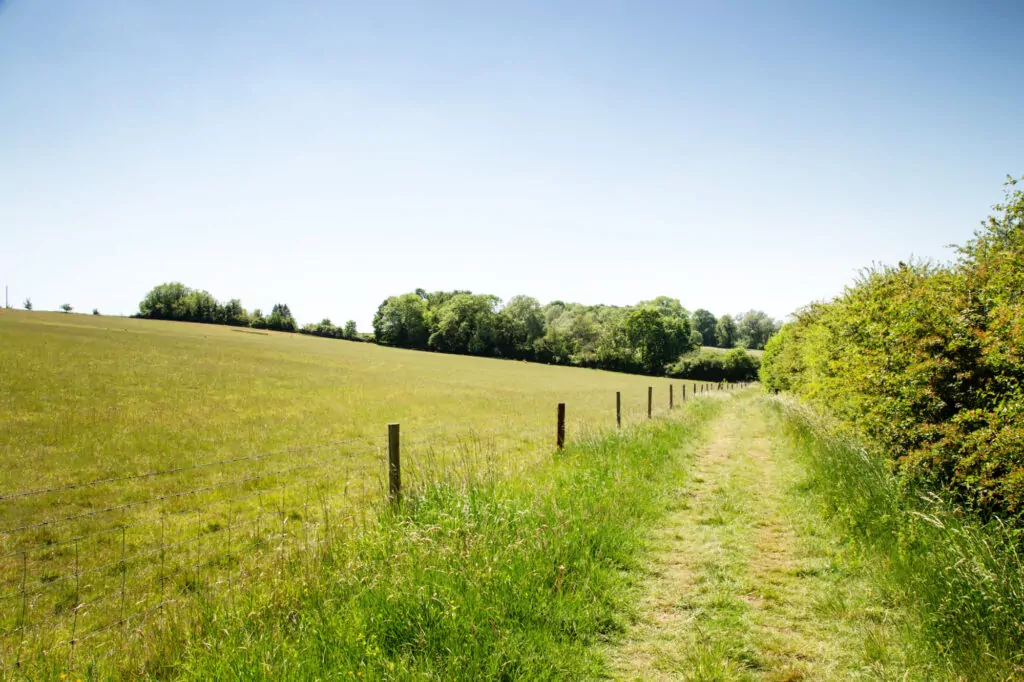
Understanding Biodiversity Net Gain – What does it mean for landowners?

By Edward Venmore, Danielle Spalding, Rose Westwood
1 Jul 2024 | 4 minute read
Recent studies have shown that the UK is one of the world's most nature depleted countries. To tackle the declining rate of biodiversity in the UK, the government has set ambitious targets in a 25-year environmental plan. This includes the target to protect 30% of our land and sea for nature through the Nature Recovery Network by 2030 and restoring or creating more than 500,000 hectares of wildlife-rich habitats outside protected sites by 2042. As part of that commitment, the Government has created legislation on biodiversity net gain (BNG) to help achieve these targets.
In England, BNG became mandatory earlier this year under Schedule 7A of the Town and Country Planning Act 1990 (as inserted by Schedule 14 of the Environment Act 2021).
As a concept, BNG can be viewed as an intervention that no longer allows development to deplete biodiversity but instead requires developers to leave the natural environment in a measurably better state. Developers are now required to create or improve habitats on development sites by at least 10% or if that cannot be achieved, they must purchase biodiversity units from local landowners or the government.
At the start of the year we published a landowner's guide to BNG. This gives landowners the information they need to understand how they can register their land and sell biodiversity units to developers. We have also recently released two podcast episodes on this topic as part of our series Experts in the Field.
In this article, we take a closer look at what landowners interested in BNG can do to get started and the common hurdles and pitfalls a landowner may experience along the way.
How to get started
Firstly, landowners will need to understand how many biodiversity units they might be able to produce on their land and which parts of their land might be best suited for biodiversity improvements.
If the land is being actively farmed, they will also need to consider whether they want to keep farming the land in some capacity or if it will be taken out of production and used wholly for the biodiversity scheme. It may well be that a landowner has areas of land that are not very productive and, therefore, taking it out of food production for an environmental scheme is a very sensible commercial step. The overriding point is to consider all opportunities for the land and how to make the best of it for the long term.
A satellite survey is a good place to start. This can help landowners to identify areas of land best suited for biodiversity net gain projects. To take the idea further, landowners will need the help of an ecologist. They can measure the baseline of the habitats and biodiversity already on the land and advise on how it could be improved. An ecologist can help prepare a habitat management and monitoring plan (HMMP) and prepare the metric calculation to demonstrate how many BNG units can be produced. Both of these will be needed before a site can be registered with the local planning authority for the sale of BNG units.
Potential hurdles
The market for BNG is still in its very early stages but the potential is obvious. Taking early advice is essential. It needs careful consideration with all the costs and potential income weighed in the balance.
Alongside the commercial considerations, a landowner also needs to think carefully about the long-term impact on land use. BNG commitments last for at least 30 years and landowners should not expect they will be free to use the land as they wish after that period has come to an end. It must be likely that at the end of the 30 years, the habitat and species on the land will remain protected in some way. Therefore, it is important to consider any future plans for that land before committing to BNG. For farming families, it will be important to have that discussion with the whole family, including the next generation who will likely take over the land, so everyone is in agreement.
Landowners need to fully understand the obligations and management requirements they are entering into in the legal agreements, as well as making sure the project is viable. For example, failure to achieve the target habitat delivery could result in enforcement action.
We mentioned the BNG register above - there has been a delay in getting the BNG register up and running so that landowners can register their biodiversity sites ready to sell units. This emphasises that the system is very much in its infancy, so landowners are going to need to take advice from the right experts to support them through this process.
What if there are other schemes already registered on the same land?
It is possible to sell BNG units and enter into other environmental schemes on the same land. However, landowners cannot double count for producing the same environmental goods. Advice should be sought on this before registering your site for BNG. A landowner must ensure it does not impact on any agreements they are already engaged with such as the Sustainable Farming Incentive and Countryside Stewardship.
How can Foot Anstey help?
Foot Anstey can provide farmers and other rural landowners with advice in relation to all natural capital schemes, including BNG.
We have large teams of specialist lawyers in real estate, infrastructure, planning, tax and succession who are experienced in this area and can support landowners through all elements of a transaction to produce BNG units on rural land.














